1. Marshmallows
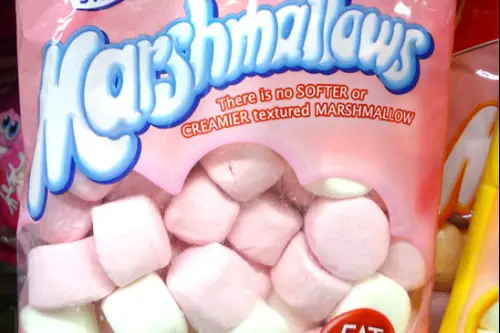
Marshmallows started off not as a sugary treat for s’mores, but as a foam-like delicacy in Egypt used during festivals and celebrations. When industrial candy makers in the 19th century learned to whip them up with sugar, egg whites, and gelatin, they became perfect for floats and parade-themed desserts. The soft, pillowy texture made them easy to shape into festive animals or letters for decorative purposes. Eventually, the convenience of store-bought marshmallows made them a hit in American kitchens.
By the early 20th century, companies like Kraft started packaging marshmallows for general consumption. Their original parade-inspired designs inspired home bakers to use them for topping hot chocolate and holiday treats. Today, when you pick up a bag at the grocery store, it’s hard to imagine these were once a spectacle of display. They’re now more about roasting and recipes than grand floats.
2. Cotton Candy

Cotton candy was invented by a dentist of all people, William Morrison, who co-created a machine to spin sugar into airy clouds at the 1893 World’s Fair. Its light, fluffy texture made it perfect for tossing to parade crowds or serving at festival concessions. The whimsical, cloud-like shapes captured everyone’s attention in a way that simple candies never could. It was designed to be visually striking, which helped it shine in public celebrations.
Eventually, cotton candy machines became more compact, making it possible for small vendors and stores to sell the candy year-round. Its vibrant colors and melt-in-your-mouth quality made it irresistible beyond just festival settings. American households began buying it for birthday parties and special occasions. Today, the grocery aisle is packed with pre-packaged bags that echo that first fairground spectacle.
3. Candy Canes
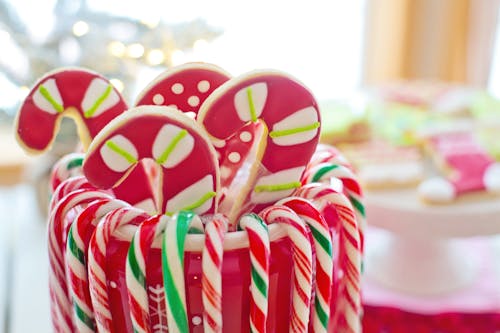
Candy canes were originally created to decorate church choirs and holiday parades in the 17th century in Europe. Their curved shape represented a shepherd’s crook, which made them perfect symbolic props for Christmas-themed parades. Bakers would handcraft them in bright red and white stripes to catch eyes from the parade route. The idea was as much about visual spectacle as it was about a sweet treat.
When the tradition crossed over to America, mass production kicked in in the early 20th century. The candies became easier to make and package for home consumption, no longer limited to parade décor. Today, we see them in grocery stores year-round, often in holiday candy bowls. Their festive origin gives them a charm beyond just being peppermint-flavored sticks.
4. Popcorn

Popcorn has a long history as a snack at fairs and parades, particularly in the United States in the 19th century. Street vendors would sell it to crowds watching floats, offering a cheap, crunchy snack that could be eaten on the go. Its ability to be flavored and colored made it a parade-friendly treat, adding to the visual excitement. Popcorn machines became a staple of festival entertainment.
With the invention of pre-popped and packaged popcorn, the treat migrated into grocery stores. Suddenly, families could enjoy the same snack that had once drawn cheers along parade routes. Flavors like caramel and cheddar started appearing to replicate the fairground experience at home. Now, popcorn is as much a movie-night staple as a festival indulgence.
5. Pretzels
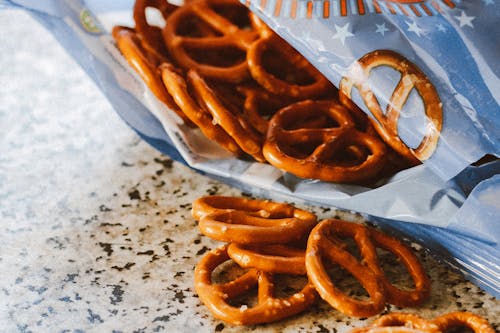
Twisted pretzels were originally a staple at German and Dutch parades, often handed out during Easter and other public festivities. The iconic shape made them visually interesting, almost like edible art, which helped keep the crowd entertained. Street vendors sold them for their portability and the simple pleasure of a warm, salty snack. They were easy to make in bulk, perfect for feeding large groups along parade routes.
When German immigrants brought the recipe to America, the popularity of pretzels spread quickly. Bakeries started packaging them for grocery stores, keeping the twisty shapes but making them more convenient to buy. Soft pretzels remained a festival favorite, while crunchy versions became a pantry staple. Their parade roots linger in the nostalgic feeling of enjoying them at fairs or sports games.
6. Caramel Apples

Caramel apples were practically made for parades and fall festivals, debuting in the early 20th century as a fun, hand-held treat for crowds. The sticky coating was a clever way to hold candy together while people walked around watching floats or performances. Their bright, glossy surface made them eye-catching, perfect for enticing kids in a festival setting. Apples were cheap, seasonal, and plentiful, making them ideal for mass distribution at public events.
As caramel-coated apples grew in popularity, candy makers started selling them pre-packaged for stores. Families could now recreate the festival treat at home during autumn holidays. Toppings like nuts and sprinkles added visual flair reminiscent of the parade displays. Today, they remain a nostalgic reminder of outdoor celebrations and seasonal fun.
7. Peanuts

Roasted peanuts became synonymous with parades and circus events in the 19th century, especially in America. Vendors could hand them out in paper cones, creating a portable, crunchy snack for excited crowds. They were affordable, easy to prepare, and didn’t spoil quickly, making them perfect for long events. The simple act of cracking the shells added a tactile joy to watching floats go by.
Over time, peanuts were packaged and sold in grocery stores, moving from festive snack to everyday pantry item. They were also transformed into peanut butter and candy-coated versions, extending their culinary reach. Grocery aisles now offer roasted, salted, and flavored varieties that echo that first crunchy cheer from parade spectators. The festival roots gave them a reputation for fun, communal snacking.
8. Soda Pop
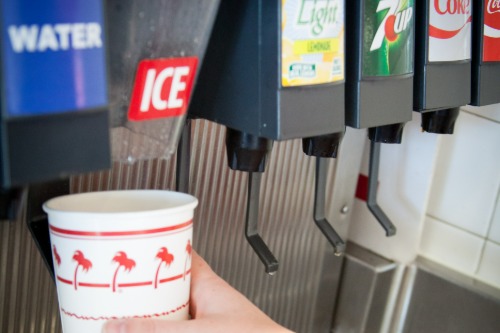
Soda fountains and bottled soda found a natural audience at parades and fairs in the late 1800s. Refreshing, fizzy, and portable, soda became the go-to drink for people standing in hot summer sun along parade routes. Vendors could hand out small bottles or cups, creating an instant festive vibe. The sugary carbonation made it feel like a special treat rather than a basic beverage.
When bottling technology improved, soda pop became a household staple in grocery stores. The fizzy drinks we enjoy today started as an indulgence for cheering crowds. Iconic brands leveraged festival popularity to market their sodas nationwide. That parade-day excitement translated directly into sparkling retail sales.
9. Jelly Beans
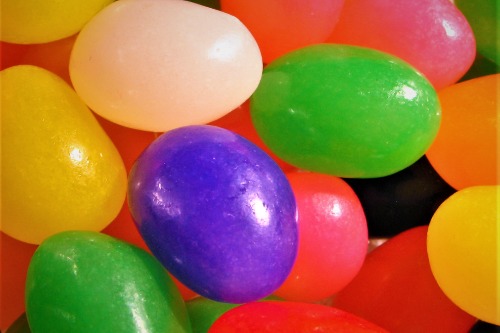
Jelly beans have roots in Easter parades, especially in the 19th century in the United States. Their small, colorful shapes made them perfect for tossing from floats or handing out to excited children. The sugary coating helped them survive travel and handling during crowded events. Their visual appeal made them almost as entertaining as the parade itself.
As demand grew, candy makers began packaging them for year-round consumption. They evolved from a seasonal festival candy into an everyday sweet treat available in bulk bins and bags. Flavors expanded beyond traditional fruit to include virtually anything you could imagine. Grocery stores now offer them as a playful snack, but their parade origins still shine in their cheerful, vibrant appearance.
10. Cracker Jack
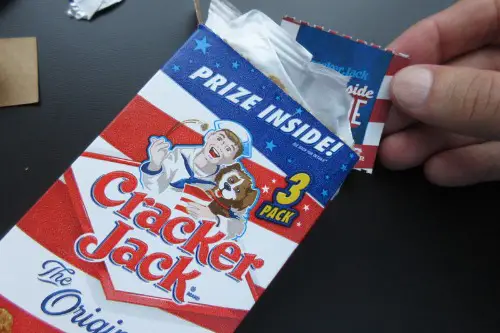
Cracker Jack was introduced at the 1893 World’s Fair, an event famous for its parade-like atmosphere. The caramel-coated popcorn and peanuts made it an ideal walking snack for visitors navigating the crowded grounds. Its packaging with prizes inside added a playful, interactive element reminiscent of festival excitement. The treat captured attention immediately, appealing to both kids and adults.
Soon, Cracker Jack became a standard grocery item, especially after being marketed at baseball games. The move from fairgrounds to store shelves kept the nostalgic feeling intact. Kids could enjoy the same sweet crunch without needing a parade to justify it. Its long-standing presence in American stores owes a lot to its public celebration roots.
11. Hot Dogs
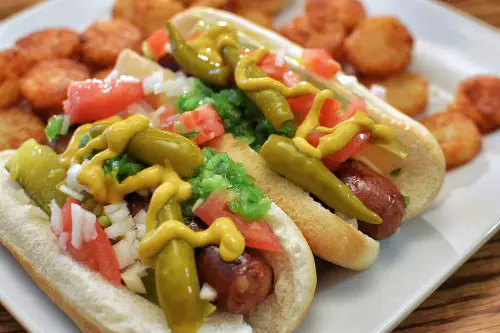
Hot dogs owe part of their fame to fairs and parade concessions in the late 19th and early 20th centuries. Vendors sold them on streets and at parades, where they were easy to eat while walking or watching the spectacle. Their simple bun-and-sausage design made them portable and satisfying for large crowds. They became a symbol of quick, festive eating at outdoor events.
Over time, packaged hot dogs and buns brought that parade-day experience into the home. Families could recreate the fairground snack at backyard barbecues and holiday cookouts. Grocery store aisles now offer dozens of varieties, from beef to plant-based alternatives. The casual, celebratory spirit of parades lives on in every bite.
12. Popcorn Balls
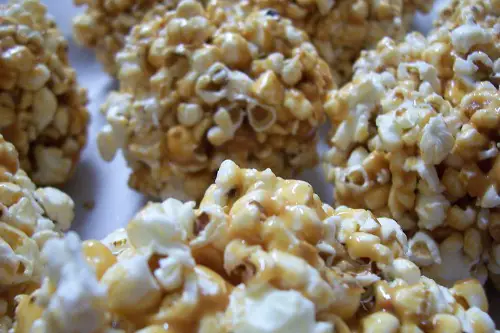
Popcorn balls were made for parades, fairs, and festivals in the late 19th century as a fun, handheld treat. Sticky syrup held the popcorn together in a compact, portable shape, perfect for enjoying while standing in crowds. Their bright candy coatings often reflected the festive colors of the event, making them visually appealing. The round shape also made them easy to toss or sell in large quantities.
Eventually, popcorn balls found their way into grocery stores, especially around holidays. They became a nostalgic snack for children and families, evoking memories of outdoor celebrations. Today’s versions come in various flavors and sizes, from miniature bite-sized treats to jumbo versions. Their sweet, crunchy, and chewy combination preserves the festive parade energy that inspired them.
This post 12 Items That Were Invented for Parades and Somehow Ended Up in Grocery Stores was first published on American Charm.


